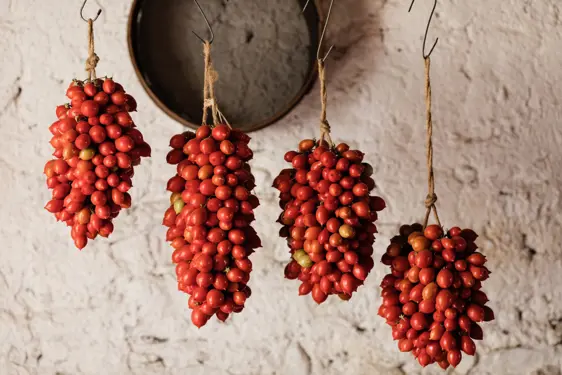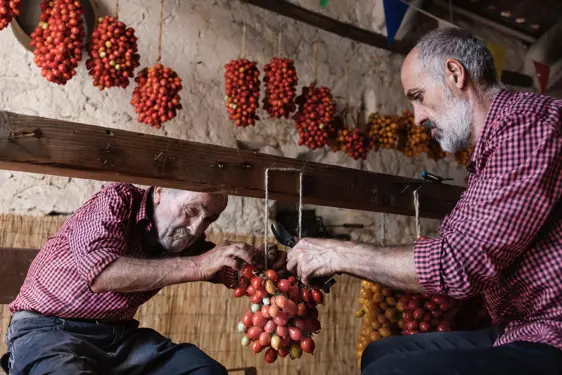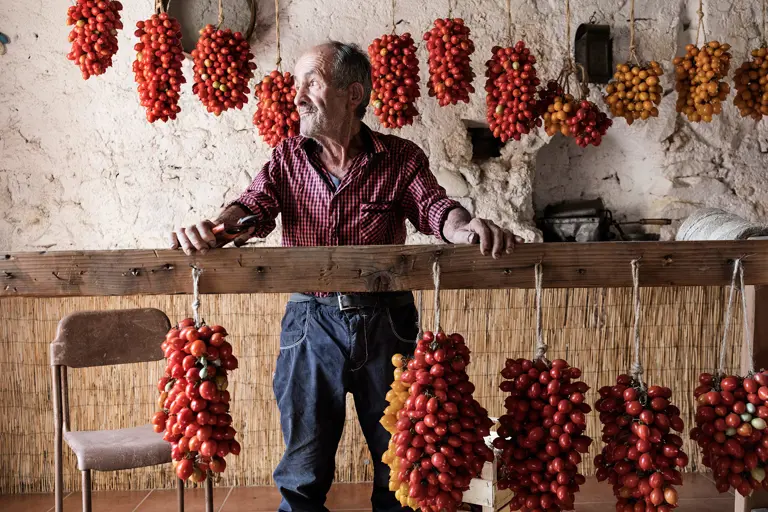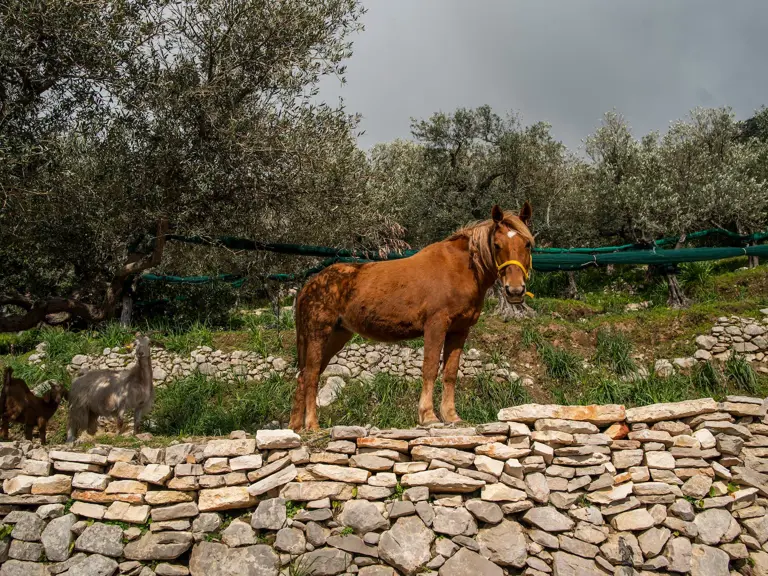GOOD THINGS: THE HANGING TOMATOES OF VESUVIUS
06.02.2019 BEST OF THE COAST
As soon as tomatoes became a staple of the Italian kitchen in the nineteenth century, the problem of how to satisfy the demand beyond the short summer growing season arose. Sun-dried tomatoes, thick, concentrated pastes and the strained sauce known as passata were just three of the answers homemakers and chefs came up with, with the canning industry adding other variants towards the end of the nineteenth century – including the possibility of conserving tomatoes whole, in their sauce, as pelati.
But in the area south of Naples, especially on the northern slopes of Mount Vesuvius, another tradition sprang up, one that has recently been revived by a handful of enterprising producers like Saverio Bifulco of artisanal food company Eligo.
It’s a conservation method based on a variety that grows only on the volcanic soils of the volcano – the pomodoro piennolo. This tomato’s thick skin and low water content means it will keep for months without needing to be treated or transformed in any way – especially if plaited in bunches and hung up in a dry, cool, well-aired space.

View
Recognized in 2009 as a DOP variety (that’s the food equivalent of Italy’s DOC wine label, given to quality products that are linked to a certain territory and can only be grown there), piennolo tomatoes are planted in spring and harvested from the beginning of July until mid-August. Each vine produces only around a tenth, by weight, of other more abundant varieties with higher water content, like the San Marzano. Once harvested, joined pairs of tomatoes are plaited on strings to form large bunches of up to a hundred. It takes around twenty minutes to assemble a standard 1.5 kilo bunch.
This task is traditionally done by the same workers who tend, weed and pick the pomodori. Men like father and son team Giovanni and Salvatore Cutolo, who are pictured at work here in the town of San Giuseppe Vesuviano.

View
Piennolo tomatoes are best consumed, Bifulco says, between November and January, after which the taste can become a little acidic. At this point, the bottled variety come into play – piennoli called ‘a pacchetelle’ that have been cut in half, raw, and conserved in pasteurized jars in their own juice, allowing cooks to release their summer flavours even in the depths of winter.
Neapolitan families acquire bunches in summer and hang them up – “in a cool, dry spot”, Bifulco advises – for use in winter. They are good cooked but also raw, plucked from the bunch, cut in rough pieces and pressed down to release their juices onto a bruschetta that has been rubbed with garlic and drizzled with olive oil.
Eligo also cultivates and markets a new yellow strain of piennolo tomato. Called ‘Giagiù’, short for ‘Giallo Giulia’, this spontaneous field hybridization was discovered in the kitchen garden of a local contadino, or small farmer, who named it after his granddaughter. Once the seeds were isolated and propagated at the Agricultural Faculty of Naples University, it didn’t take long for the yellow piennolo to become a big hit in the pizzerias and trattorias of Naples, both for its pleasant balance of acidity and sweetness, and for its vibrant colour, a real gift to the artistically minded pizzaiolo.
Le Sirenuse Newsletter
Stay up to date
Sign up to our newsletter for regular updates on Amalfi Coast stories, events, recipes and glorious sunsets



